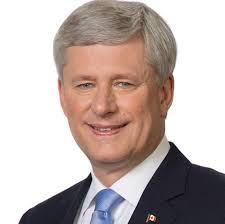Canada-U.S. trade relationship strongly benefits the U.S. rather than “subsidizing” Canada: Centre for Future Work
Canada economically subsidizes the United States in several ways through trade rather than the U.S. subsidizing Canada as President Donald Trump falsely claims, according to a report from the Centre for Future Work.
 Canada’s bilateral trade surplus – which Trump maintains constitutes a “subsidy” for Canada – is, properly measured, only one-fifth as large as Trump contends, says the report by economist Jim Stanford (photo at right), director of the Vancouver-based Centre for Future Work and an economics professor at McMaster University.
Canada’s bilateral trade surplus – which Trump maintains constitutes a “subsidy” for Canada – is, properly measured, only one-fifth as large as Trump contends, says the report by economist Jim Stanford (photo at right), director of the Vancouver-based Centre for Future Work and an economics professor at McMaster University.
The U.S. trade deficit with Canada amounted to about US$40 billion in 2023 according to U.S. data, not $200 billion as Trump claims, Stanford says in his report, Who’s Subsidizing Whom? Myth and Reality about the Canada-U.S. Trade Balance.
The trade deficit in 2023 was 29 percent less than the 2022 deficit. The deficit fell a further nine percent during the first nine months of 2024, the report says.
“The bilateral deficit is small and shrinking, bilateral trade is far more balanced with Canada than with other U.S. trading partners, and the overall U.S. deficit is driven mostly by macroeconomic and financial factors, not structural problems in U.S. competitiveness,” according to the report.
Calculating the Canada-U.S. trade balance must also account for trade in services, including commercial and business services, transportation, tourism and even international trade in education and health care, Stanford says.
The U.S. enjoyed a surplus in services trade of more than $275 billion in 2023, which will likely exceed $300 billion for 2024. The success of U.S. trade in services offsets a significant proportion (one-quarter or more, depending on measurement) of its deficit in merchandise, according to Stanford’s report.
Cross-border capital investments (such as investment income paid from Canada to U.S. investors) also need to be counted in the overall trade balance, the study says. In 2023, this translated into a net surplus for the U.S. on investment income worth (according to Statistics Canada data) some $13.3 billion – and doesn’t include profits retained by U.S. subsidiaries in Canada.
The impact on Canadian employment, production and exports from a major across-the-board tariff imposed on Canada’s sales to the U.S. (which constitute the large majority of Canadian exports) would be devastating, almost certainly causing a protracted recession, Stanford says.
According to his report, the two countries’ bilateral trade relationship strongly benefits the U.S., given that:
- Canada is the largest market in the world for U.S. exports: over US$440 billion in 2023.
- The Canada-U.S. trade relationship is among the most balanced of any major U.S. trading partners: America exports 92 cents to Canada for every dollar the U.S. purchases (far more than it does to the rest of the world).
- The bilateral trade deficit with Canada is small, ranking 10thamong U.S. trading partners, and accounting for only five percent of the total U.S. trade deficit.
- The U.S. enjoys a strong surplus in services trade with Canada, offsetting much of the deficit in merchandise – and only partially reflected in official trade statistics.
- The U.S. enjoys a net surplus on investment income flowing out of Canada (Cdn$13 billion in 2023), further reducing the overall payments imbalance.
- Most Canadian exports to the U.S. are used as inputs by American businesses in their own production – more than with other trading partners. Tariffs would increase costs for U.S. producers, reducing their competitiveness (including in export markets).
- The bilateral trade deficit with Canada has been fully offset by Canadian purchases of U.S. bonds and loans to the U.S. In effect, Canadian lenders are “subsidizing” the U.S. to continue consuming more than it produces. Low interest rates on that lending mean that the U.S. still enjoys a net surplus on investment income with Canada, despite its net debt to Canada.
- Canadian energy exports (including oil, gas, coal and electricity) make up 60 percent of the total bilateral merchandise trade deficit, and an even larger share of the total deficit (including services). Access to secure and lower-cost energy is a huge benefit for U.S. businesses and consumers.
“By supplying the U.S. with less expensive and secure supplies of petroleum that now constitute the majority of U.S. energy imports, Canada is underwriting energy security for the entire U.S. economy,” Stanford says.
Trump recently claimed the U.S. doesn’t need anything from Canada, even oil. “Clearly, that boast is false. A shut-off of Canadian oil exports to the U.S. would spark an energy crisis in the U.S. far worse than any of the supply shocks of the 1970s,” Stanford says.
Canada is “clearly subsidizing the U.S.” through trade arrangements
In fact, he says that in at least three ways, Canada is clearly subsidizing the U.S., through trade arrangements that diverge from normal international trade or business practices, including:
- Large shipments of secure, lower-cost energy, with unique opportunities for U.S. companies to invest in and profit from those exports.
- Large Canadian net imports of services from the U.S., many of which (such as digital, streaming and data services) are weakly regulated, underreported and largely untaxed (and thus subsidized relative to other businesses).
- Low-interest loans provided by Canadian investors that provide the U.S. with purchasing power fully equivalent to the bilateral trade deficit, yet despite which Canada continues to incur a large net deficit in investment income. It’s as if a borrower received a loan from a bank, and then also received interest payments fromthe bank (rather than the other way around).
In many circumstances, a trade deficit is a sign of economic success, not failure, Stanford argues. For example, if a major capital inflow consists mostly of new direct investment entering the country (as foreign companies seek to exploit favourable domestic conditions), the resulting trade deficit would correspond to strong economic growth – and, indeed, would be needed to concretely supply the tangible capital goods necessary for those new business investments.
Similarly, if a country’s domestic economy was growing more vibrantly than its trading partners, it would tend toward deficits in international trade; those deficits, in turn, would help to “spread” the stimulative impact of that growth to the broader global economy.
These drivers have been an important factor in U.S. trade deficits in international trade in goods and services – deficits the U.S. has incurred for 49 consecutive years, Stanford says.
Year-end figures for 2024 (to be published in the coming weeks) will likely show the U.S. trade deficit exceeding US$1 trillion, he adds.
“A deficit in trade with one trading partner cannot directly be interpreted as a sign of general trade weakness, depending on how that trade relates to trade flows with other partners,” he says.
“This long-standing deficit is not new or unexpected, and certainly cannot be described as a ‘national emergency’ as claimed by Trump officials (who are reportedly considering invoking emergency powers to justify unilateral tariffs).”
Recent U.S. trade deficits corresponded with strong economic conditions in the U.S. – much stronger than virtually any of its major trading partners, Stanford notes.
In aggregate, the U.S. would be harmed by disruptions to this bilateral relationship as much as Canada, he says.
While that harm would be dispersed across a much larger economy and population (and hence not be as proportionately disruptive), significant regions and sections of the U.S. economy (including border states, energy-importing regions and key cross-border industries like automotive manufacturing) would suffer greatly from Trump’s proposed actions, Stanford says.
Trump’s threats are being used to create leverage in forthcoming trade negotiations, intimidate Canada (and other allies, including Panama and Greenland), and foster an image of aggressive foreign policy for domestic U.S. political consumption, he says.
“Even more worrisome is increasingly explicit interference by Trump and his advisors in Canadian democracy, exploiting legitimate Canadian concern over the potential impact of U.S. tariffs to effectively promote right-wing politicians here.”
Canada’s discounted oil is subsidizing the U.S., says former prime minister Stephen Harper
 Former prime minister Stephen Harper (photo at right) also said, in a podcast interview with Florida-based podcaster Gabe Groisman (and the former mayor of Bal Harbour, Florida) that Canada is currently subsidizing Americans by selling them petroleum at a discount and that the country should consider selling its oil and natural gas to other countries instead.
Former prime minister Stephen Harper (photo at right) also said, in a podcast interview with Florida-based podcaster Gabe Groisman (and the former mayor of Bal Harbour, Florida) that Canada is currently subsidizing Americans by selling them petroleum at a discount and that the country should consider selling its oil and natural gas to other countries instead.
Canada’s “modest” trade deficit with the U.S. is largely because of Canada’s big oil and gas sales to Americans at a price that tends to be lower than what the petroleum could fetch on world markets, Harper said. Canada lacks sufficient capacity to export oil and gas overseas.
Harper said he was shocked by some of Trump’s comments, which Harper said do not sound like the words of a “friend, a partner and an ally.”
Stéfane Marion, chief economist of the National Bank, told the National Post that Canada’s discounted oil is the reason the U.S. is able to be a net energy exporter. The U.S. transforms the imported Canadian heavy oil into gasoline, natural gas liquids, distillates, petrochemicals, heavy fuel oil and propane and sells these products to the world.
“Trump’s claim Canada is subsidized by the U.S. is laughable – and Trump’s economic team certainly knows it,” Stanford says.
Showing Canadians that Trump’s claims of “subsidization” are false and that the bilateral relationship is mutually beneficial, can solidify Canadian support for their negotiators to fight for a fair resolution to a potential breakdown in trade with the U.S., he says.
Canadian trade negotiators and the Canadian public at large, he adds, “need to understand the economic reality of the Canada-U.S. trade relationship, so they can confidently reject Trump’s bluster.”
“The fact that Trump’s threats [of tariffs and annexing Canada through economic force] come at a moment of political division and uncertainty in Canada makes them all the more dangerous.”
Shortly following Trump's inauguration on January 20, a Trump administration official told Reuters that the president will hold off on the tariffs for now and instead direct agencies in a memo to "investigate and remedy persistent trade deficits and address unfair trade and currency policies by other nations." The memo will single out China, Canada and Mexico for scrutiny, the official said.
However, in the evening of January 20, Trump told reporters that he's thinking of implementing 25-perent tariffs on Mexico and Canada on February 1 and is proceeding with creating an External Revenue Agency to collect the tariffs.
Stanford says if Trump does impose tariffs, then Canada will confront a national emergency. “All stakeholders (including governments at all levels and of all political persuasions) will need to respond accordingly with a courageous defense plan.”
Stanford says this plan would need to include:
- aggressive efforts to expand trade links with other countries.
- equally aggressive efforts to reorient Canadian production around domestic (rather than export) markets.
- emergency fiscal measures to support domestic spending power and household financial stability in the wake of industrial disruption and unemployment (potentially funded in part with revenues from export taxes and/or tariffs imposed by Canada in the event of a trade war).
- a national strategy to build alternative domestically-focused industries (including affordable housing, sustainable energy, and human and caring services) to fill the void left by a downturn in export industries.
Canada also needs to be ready to impose both counter-tariffs on selected U.S. imports and export taxes or limits on key commodities going out, Stanford said in an email to Research Money.
“That is necessary, once you’re in the logic of ‘mutual assured destruction,’ to show the other side that they will suffer, too, in hopes of convincing them to step back from the war,” he said.
While those measures will hurt Canada, too, export taxes would at least raise money for the country instead of all the proceeds of the trade war going to the U.S., Stanford said.
The United Steelworkers Union (USW), which represents 850,000 workers in Canada and the U.S., says Trump’s threat to impose tariffs is a “reckless and harmful move” based on exaggerated and false allegations of U.S. subsidies to the Canadian economy.
 “These reckless allegations and the threat of tariffs are an attack on the deeply integrated industries, strong supply chains and the good, unionized jobs on which they depend on both sides of the border,” Marty Warrant (photo at right), national director of Canada for the USW, said in a statement.
“These reckless allegations and the threat of tariffs are an attack on the deeply integrated industries, strong supply chains and the good, unionized jobs on which they depend on both sides of the border,” Marty Warrant (photo at right), national director of Canada for the USW, said in a statement.
Workers in key sectors such as steel, aluminum, forestry, mining, auto and broader manufacturing and processing sectors are the backbone of our economy, Warrant said. “Tariffs will hurt not only Canadian workers but also American manufacturers, workers and families who depend on the seamless flow of goods and materials between our countries.”
Canada must implement domestic mitigation measures to safeguard Canadian jobs and industries in the short, medium and long term, Warrant said. This includes the implementation of targeted support for affected sectors, and trade safeguard measures.
The USW also called for assistance for workers and communities impacted by tariffs, including improving and expanding access to employment insurance and other income-support measures, long-awaited industrial policies aimed at bolstering strategic sectors, domestic procurement policies and investment in domestic manufacturing capacity.
R$
| Organizations: | |
| People: | |
| Topics: |
Events For Leaders in
Science, Tech, Innovation, and Policy
Discuss and learn from those in the know at our virtual and in-person events.
See Upcoming Events
You have 0 free articles remaining.
Don't miss out - start your free trial today.
Start your FREE trial Already a member? Log in
By using this website, you agree to our use of cookies. We use cookies to provide you with a great experience and to help our website run effectively in accordance with our Privacy Policy and Terms of Service.



.jpg)
